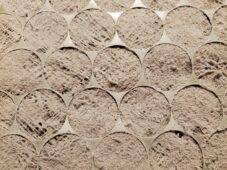Do You Know The Difference Between These 10 Popular American House Styles?
Driving through any American neighborhood is like flipping through a storybook of architecture. Every house style has its own history, personality, and little quirks that make it stand out. But it can be hard to tell the house styles apart unless you’ve done a little research. Once you know what you’re looking for, it becomes much easier to tell them apart, and to figure out what style of house you live in. Here’s a quick rundown of ten classic American home styles and what makes each one special. What’s your favorite?
Colonial

Colonial homes are all about balance and tradition. Picture a centered front door, evenly spaced windows, and a simple rectangular shape. These houses date back to the 1600s and were built in early American settlements, which is why they feel so classic and timeless. Inside, you’ll often find a central hallway with rooms branching off. They’re straightforward, sturdy, and simply elegant. Even newer builds borrow from this classic style because it never feels outdated.
Cape Cod

Cape Cod homes started in New England, and were built to withstand the harsh coastal winds in the area. They’re usually one or one-and-a-half stories with a steep roof, dormer windows, and cover a smaller area than other styles on this list. They often have wood shingles and a warm, cottage-like feel. They look small from the outside but don’t feel cramped inside because there’s no wasted space. If you love a home that feels like a cozy cottage, the Cape Cod style brings that kind of comfort.
Craftsman

Craftsman homes celebrate natural materials and thoughtful details. Think wide front porches, tapered columns, exposed beams, and shelves or benches built right into the walls inside. They rose to popularity in the early 1900s when people craved simplicity and quality. A Craftsman home feels grounded and welcoming, like it was designed for how people actually live, rather than to show off. Even the smallest homes feel warm and full of character.
Ranch

Ranch homes stretch out in a long, low, horizontal line and usually spread out across a single floor. Born from a need for practical houses in the mid-century, they make life easy with open layouts and sliding doors to the backyard. They’re perfect for anyone who likes a simple flow through the inside of a house and hates stairs. Ranch homes aren’t fancy, but they’re undeniably comfortable, making them a favorite for families and retirees alike.
Victorian

Victorian homes are like architectural desserts: decorative, colorful, and sometimes a little over the top. Expect turrets, gingerbread trim, stained glass, and dramatic rooflines. They were popular in the late 1800s when bold, decorative detailing was all the rage, and many people still love the added details. Inside, the rooms can feel personal, unique, and cozy, almost like a dollhouse brought to life. They’re showstoppers for anyone who loves romantic charm and a house with a bit of history.
Tudor

Tudor homes look like the houses you expect to see in a European village. They’re known for steep pitched roofs, tall narrow windows, brick or stone exteriors, and decorative half-timbering. This style became popular in America in the early 20th century and it’s a style of house that feels sturdy and warm. Tudors feel a bit dramatic from the outside but warm and inviting inside, perfect for cooler climates where coziness matters.
Mid-Century Modern

If you’ve ever stopped to admire a home with floor-to-ceiling glass windows or a perfectly flat roofline, chances are you’re looking at a mid-century modern house. These homes are all about simplicity, openness, and a seamless connection to the outdoors. Most of these houses were built in the 1940s to 1970s, and they’re ideal for people who like open floor plans, minimal clutter, and lots of natural light. Mid-century modern houses have a unique way of feeling both retro and totally fresh.
Farmhouse

Originally built to meet the needs of families who owned rural land, farmhouse-style homes have now become popular everywhere. Look for big kitchens, wide porches, tall windows, and a blend of rustic and modern touches. This style of house is unfussy and functional but still warm and charming. Whether it leans classic or modern, a farmhouse always feels like a place where people gather, share meals, and can relax for a while.
Mediterranean

Mediterranean homes take inspiration from traditional homes in Spain and Italy. They feature stucco walls, red tile roofs, arched doorways, and plenty of iron details. These houses are mostly found in warm climates because they stay cool easily and encourage outdoor living with courtyards and balconies. These homes bring a breezy, romantic vibe that will make you feel like you’re living in a seaside villa, even if you’re miles from the ocean.
Contemporary

Contemporary homes don’t follow one specific look or a set of rules. Instead, they embrace current trends like eco-friendly materials, clean lines, open spaces, and creative shapes. They often use large windows, mixed materials, and minimalist design. What makes contemporary homes exciting is they’re always changing as architects and designers try out new ways to build houses. Contemporary homes challenge the usual design rules and feel fresh, functional, and forward-thinking.
Related Articles
-See That Small, Diagonal Window On Old Houses? They Have A Secret Purpose
-Comprehensive Guide on How to Build a Greenhouse
-A New Beginning: Modern Makeover of Victorian Townhouse in North London
Once you start learning about all these different home styles, you’ll realize how many different houses you pass without noticing the difference. Each house style tells a little story about when it was built and what people valued in their homes at the time. Whether you’re house hunting, dreaming, or just curious, knowing these differences makes a walk around the neighborhood feel a bit more interesting. After all, a house isn’t just a house. It’s a snapshot of history, design, and the people who build it.









